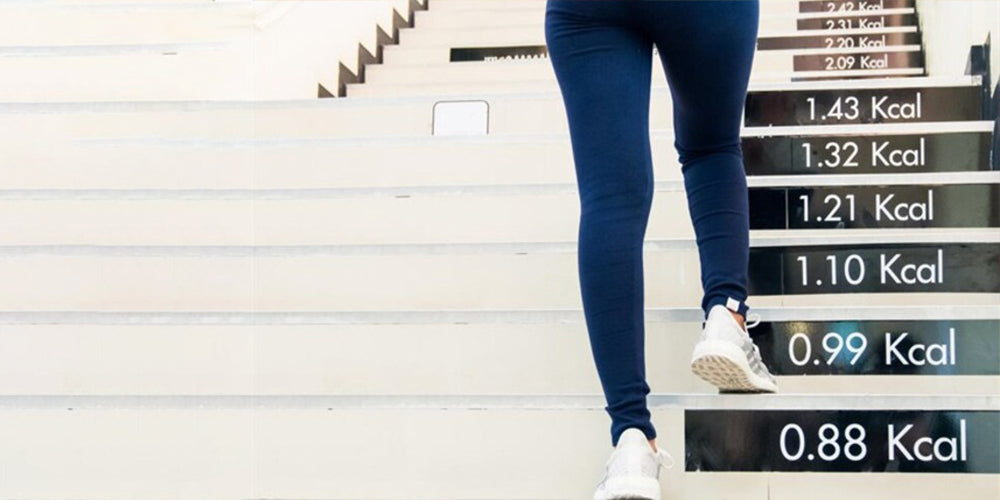Table of Contents

1. Weight Loss and Running
Weight loss and running have a tense connection to say the least. Beginning to run or increasing the intensity of your run can result in weight loss for some people. Other people gain weight as a result of developing a running habit. For example, after running, you stop at the pastry store after every exercise and end up with more pounds then when you started with.
However, if you really want to lose weight by running, there are different strategies you can follow to make your travel distance work for you instead of against you. You might want to add cross training at some point, perhaps by adding extra challenges. What I am trying to say is that you don't have to go on extremely intense exercises unless you want to.
2. How to Make Running Effective for Weight Loss
For running to effectively help you with weight loss, you must pay close attention to your activities in the hours before and after your run. You will have to pay more attention to what you eat before, during, and after your run. This doesn't mean you shouldn't eat before you go, while you are out on your track, and after you have returned back home. It just means being careful about how you handle weight loss during and after your activities.
Jessica Mazzucco, a personal trainer located in New York, explains the concept behind running as follows:
“When you start running, you burn a significant amount of calories. The number of calories you burn when running is determined by your pace, body weight, and running duration. The average-sized runner, on the other hand, may expect to burn approximately 100 calories every mile. You burn fat and carbohydrates when running, which causes your heart rate to accelerate and oxygenated blood to be pumped into your muscles.”

3. Training for Weight Loss
Although slow, pleasant runs are good for increasing your metabolism, they are not highly effective at burning fat. Exercises that are intense and create a strong training stimulus are more effective in burning calories such as cross training and HIIT.
Furthermore, your body requires a significant amount of energy following an exercise to be able to recuperate. Because of the "afterburn effect," your body continues to gain fat even after you finish your workout.
4. Planning for Weight Loss
When it comes to weight loss workouts, running isn't typically the first thing that comes to mind. But if you are wondering how to lose weight by running, it is not that difficult.
Despite the fact that there is no magic recipe or fitness program that will force your body to shed excess fat on your run, running workouts to help you lose weight can definitely be incorporated into your routine along with weightlifting exercises.
Jogging for weight loss must consist of short, intense bursts of cardiac activity that send your system into overdrive, followed by a brief recovery period, before repeating the process over and over again.
According to Andy Jones-Wilkins, a Carmichael Training Systems (CTS) coach,
“I don’t suggest doing a lot of intensity. The longer time on your feet at an aerobic pace, where you can carry on a conversation. That's what's going to help you burn fat.”

5. Calorie Burn by Running
One pound of fat is equal to 3,500 calories. If you want to lose one lb of fat in a week, Then you need to create a deficit of 500 calories everyday.
5.1. Basal Metabolic Rate (BMR)
Your resting metabolic rate, known as your basal metabolic rate (BMR), is the amount of calories required to fuel your body's life sustaining, natural functions while you are resting. It is your basal metabolic rate (BMR) that determines how quickly you burn or expend calories. It accounts for around 60-70% of the calories you burn. Breathing and blood circulation require energy and the amount of energy you need depends on your gender, age, body weight, and height.
This comprises of the vitality your body expends to sustain basic functions, such as respiration, circulation, and digestion.
6. How to Calculate Calorie Burn for Weight Loss
6.1. Gender, Weight, Height, and Age
Your basal metabolic rate (BMR) is the first thing you should know if you want to lose weight. Calculate your basal metabolic rate using the BMR calculator and keep your BMR in mind when you plan your meals and weight loss program. As long as you have fat on your body, you can get away with keeping your daily calorie intake lower than the BMR you calculated as your body weight will become used to making the difference, resulting in you beginning to lose weight.
BMR is normally around 1600-1800 kCals for men and 1400-1550 kCals for women, though this varies from person to person.

It is very simple to calculate your BMR
| Male BMR | Female BMR |
|---|---|
| 66.47 + | 655.1 + |
| 6.24 x weight in lbs | 4.35 x weight in lbs |
| + 12.7 x height in inches | + 4.7 x height in inches |
| - 6.755 x age | - 4.7 x age |
For example, if you are a man:
Weight: 180 pounds
Height: 5’11
Age: 42
BMR = 66 + (6.24 x 180) + (12.7 x 71 inches) - (6.8 x 42) = 1805.3
If you are a woman:
Weight: 140
Height: 5’4
Age: 35
BMR = 655 + (4.35 x 140) + (4.7 x 64) - (4.7 x 35) = 1400.3
Routine Exercise BMR
If you barely exercise, multiply your BMR by 1.2
- If you exercise 1 to 3 days per week, multiply your BMR by 1.375
- If you exercise 3 to 5 days per week, multiply by 1.55
- If you workout 5 to 7 days per week, multiply your BMR by 1.725
- If you exercise everyday, multiply your BMR by 1.9
- For a man, if you exercise three days a week, your daily caloric need is 1805.3 x 1.55 or 2798.215.
- If you are a woman who exercises six days a week, your daily caloric need is 1400.3 x 1.725 or 2415.6.
7. Rules for Running Plan - Weight Loss
Weight loss training includes three essential factors to help keep your overall weight low for longer periods. When you include cross training and a healthy diet in your weight loss plan, you get better results and lessen the chances of regaining excess weight.
- Cardio Workouts
- Strength training
- Healthy Diet
7.1. Strength Training
"Strength training helps both men and women," was what was written in the British Journal of Sports Medicine, "Improvement in bone mass and lean mass, improved body composition (owing to lower fat mass), cardiovascular fitness, strength, and an enhanced sense of well-being."
People should integrate two types of training into their weight loss workout routines to better burn fat and build up muscles. Strength training is the first type of training recommended to individuals as a starting point as it can be adjusted to accommodate people of various fitness levels.
7.2. Cardio Workouts
Cardiovascular training is the second type of workout for fat burning. Cardio is a favorite exercise because it has been shown to increase the amount of fat burned while also including diversity in your exercise program. Running isn't the only kind of cardio you can do. Cycling, skating, and swimming are all excellent ways to engage in a cardio workout.
According to the Mayo Clinic, it is recommended that,
"You engage in up to 300 minutes of moderate physical activity per week to lose weight or sustain weight loss. This takes approximately 60 minutes per day, five days a week.”
7.3. Healthy Diet
According to James O. Hill, PhD, the Registry's co-founder and director of the Center for Human Nutrition at the University of Colorado Health Sciences Center,
“In order to lose weight and keep it off people must have discipline. It is extremely tough to lose weight and keep it off."
"Successful people plan their days in advance to ensure that they stick to their diet and receive enough physical exercise throughout the day. It requires effort to achieve long-term weight management success."
7.4. Running Tips
When starting any new training programs, it is important to consume nutritious foods beforehand. Make an effort to consume two to three portions of fruit and vegetables every day, as well as lean protein and complete grains. Additionally, remember to stay hydrated by drinking lots of water to replenish the fluids lost when sweating.
8. Takeaway
Running is a proven weight loss method and is best to burn the unwanted belly fat. It is easy to add running in your daily routine compared to other workouts and exercises that require a lot of motivation and equipment such as a yoga mat or weights. Another advantage of running is that it helps you burn weight even when you are not exercising.
So start today and reap the benefits of running.
"This article is originally posted on borntough.com, and borntough.com own the sole copyright on this article. If you read this article outside borntough.com, please report this website to the authority because they have stolen the content from borntough.com and violated borntough copyright"
